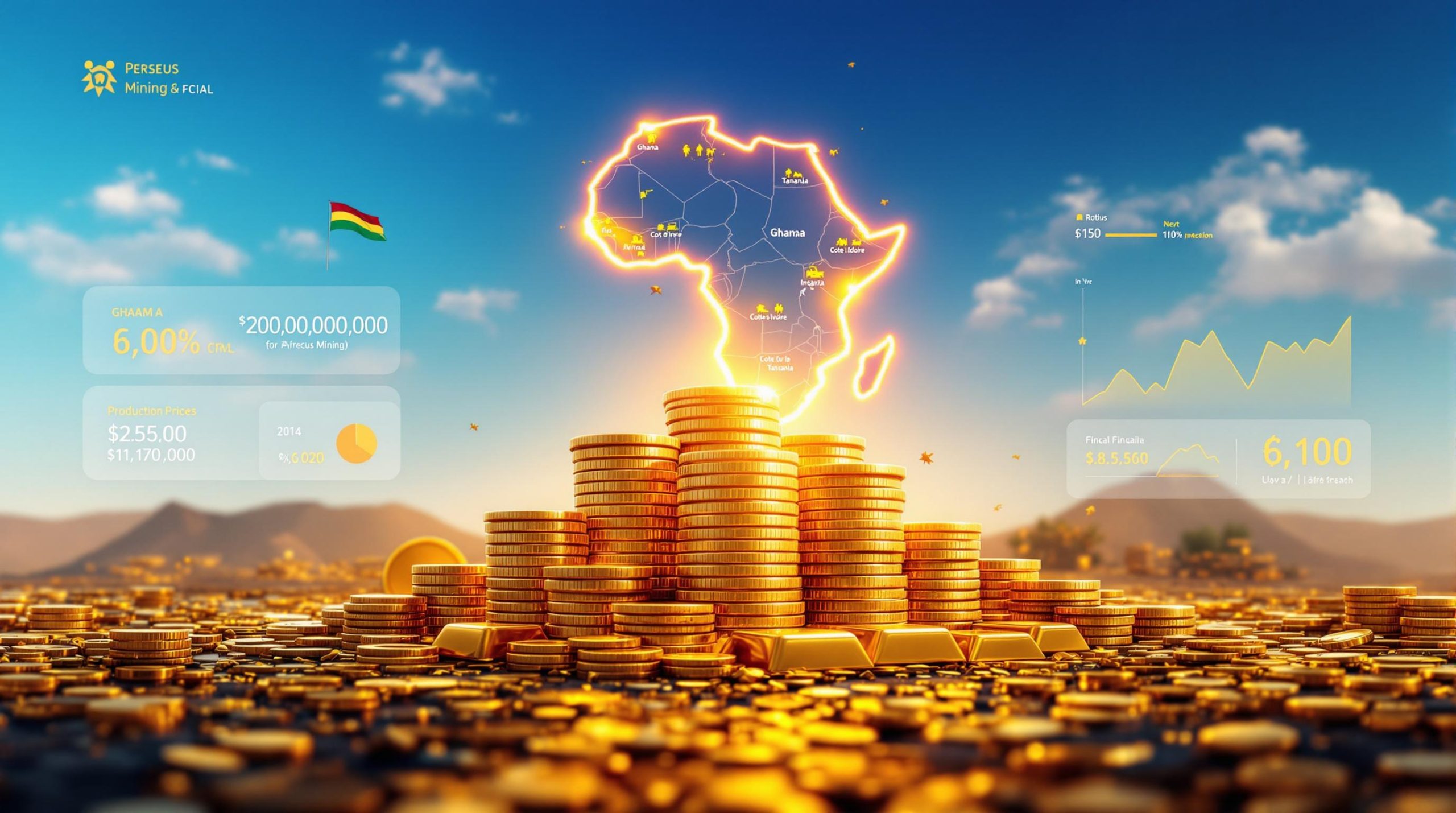Why Are US Copper Tariffs Causing International Concern?
The proposed 50% tariff on copper imports to the United States has sent shockwaves through global commodity markets, particularly alarming copper-producing nations. Zambia, as Africa's second-largest copper producer, stands to be significantly impacted by this protectionist measure. According to reports from Miningmx (July 2025), the tariffs could destabilize carefully cultivated trade relationships at a pivotal moment for the copper industry.
These substantial tariffs come at a time when global supply chains are already under pressure from geopolitical tensions and increasing demand for critical minerals transition needed in renewable energy technologies and electric vehicles. Industry analysts suggest the tariffs could trigger retaliatory measures from affected nations, potentially escalating into broader trade conflicts.
"These tariffs represent a fundamental shift in US trade policy toward critical minerals that could have far-reaching consequences beyond just copper markets," noted several international trade experts monitoring the situation.
For commodity-dependent economies like Zambia, the ramifications extend far beyond simple trade statistics—they threaten national development plans, currency stability, and social welfare programs that rely on mining revenues.
How Would Tariffs Impact the Zambian Copper Industry?
Zambia's Position in Global Copper Production
Zambia has established itself as a copper powerhouse, ranking as Africa's second-largest producer behind the Democratic Republic of Congo. Copper represents approximately 70% of Zambia's export earnings, making it the backbone of the nation's economy. The Zambian Consolidated Copper Mines (ZCCM), the state mining investment company, has been actively working to increase production capacity through modernization and international partnerships.
The country produced approximately 830,000 tons of copper in the most recent fiscal year, according to industry data, with ambitious plans to reach 1 million tons within the next five years. This expansion strategy includes significant investments in mining technology, exploration, and processing capabilities as part of the global copper supply forecast.
Economic Vulnerability to Trade Barriers
The introduction of a 50% US import tariff would create profound challenges for Zambia's mining sector. As Kakenenwa Muyangwa, head of ZCCM, highlighted in statements to the Financial Times (cited by Miningmx), these tariffs threaten jobs in a country where mining represents a crucial employment sector, directly supporting over 60,000 formal jobs and indirectly sustaining hundreds of thousands more through various support industries.
The potential impact extends beyond immediate economic concerns:
- Revenue shortfalls: Government tax receipts would decline, affecting public services
- Currency pressure: Reduced dollar inflows could destabilize the Zambian kwacha
- Investment uncertainty: Long-term mining projects may face financing challenges
- Community impacts: Mining regions could see increased unemployment and social strain
With copper price predictions already subject to significant market volatility, adding substantial trade barriers could further destabilize an industry that requires predictability for long-term investment decisions.
What Is the Lobito Corridor Project?
Strategic Infrastructure Development
The Lobito Corridor represents one of Africa's most ambitious infrastructure initiatives, designed to transform regional trade patterns by connecting landlocked Zambia and other Central African nations to Atlantic ports through an enhanced railway network. This corridor runs from Angola's Lobito port through the Democratic Republic of Congo and into Zambia's Copperbelt Province.
The project includes:
- Railway rehabilitation and expansion
- Port facility modernization
- Customs and border processing improvements
- Development of logistics hubs at key junctions
When completed, this transportation artery will reduce freight transit times from weeks to days, slashing logistics costs that have historically hampered African mineral exports.
US-Zambia Partnership Investment
The United States has demonstrated strong commitment to the Lobito Corridor through a substantial $550 million financing package, as confirmed by Muyangwa in his statements to the Financial Times. This investment represents one of America's largest infrastructure commitments in Africa in recent years.
The funding forms part of a broader US strategy to diversify critical mineral supply chains away from potential geopolitical rivals. By investing in African infrastructure, the US aims to secure long-term access to essential resources while supporting economic development in partner nations.
Intended Trade Benefits
According to Muyangwa, "The fundamental concept behind the Lobito Corridor centers on channeling these essential minerals, particularly copper, toward American markets." The corridor was specifically designed to create a more efficient supply route benefiting both African producers and US consumers.
The project exemplifies a new model of infrastructure development that aligns commercial interests with strategic priorities:
| Stakeholder | Primary Benefits |
|---|---|
| Zambia | Reduced export costs, improved market access |
| United States | Secured supply chains, reduced dependency on rival nations |
| Regional nations | Economic integration, increased trade volumes |
| Private sector | Investment opportunities in mining, logistics, and services |
This collaborative approach highlights how infrastructure can serve both developmental and strategic objectives simultaneously.
Why Is ZCCM Seeking Tariff Exemptions?
Contradiction in US Policy
Kakenenwa Muyangwa has articulated a compelling case for tariff exemptions based on the fundamental contradiction in current US policy. He points out the logical inconsistency of the United States investing $550 million in infrastructure specifically designed to facilitate copper exports from Zambia while simultaneously considering tariffs that would effectively block those same exports.
This policy contradiction threatens to undermine the entire economic rationale behind the Lobito Corridor investment. As Muyangwa explained to the Financial Times, the corridor was conceived as a mineral supply route to American markets, with copper being a primary commodity. Imposing prohibitive tariffs would render this massive infrastructure investment largely purposeless for its intended beneficiaries.
Diplomatic Negotiations
The Zambian mining chief has expressed cautious optimism that Washington might consider special provisions or exemptions for Zambian copper shipments. These diplomatic negotiations are occurring through multiple channels:
- Direct government-to-government discussions
- Industry association advocacy
- Multilateral forums on trade policy
- Development finance institutions that backed the Lobito Corridor
Exemptions would acknowledge the strategic partnership between the two nations and prevent undermining the substantial joint investment in regional infrastructure. Precedents exist for such exemptions, as the US has previously granted tariff waivers to strategic allies on other commodities.
Strategic Minerals Access
For the United States, maintaining access to copper from politically stable partners like Zambia aligns with broader objectives to secure critical mineral supply chains outside of potentially hostile or unstable regions. Zambia represents a democratic alternative to some larger copper producers with more complicated geopolitical relationships with Washington.
The copper from Zambia's mines is particularly valued for:
- High purity levels suitable for advanced electronics
- Responsible production practices compared to some competitors
- Supply chain transparency
- Geopolitical reliability as a trade partner
These factors strengthen Zambia's case for exemption from blanket tariff policies designed primarily to target other producing nations.
How Do Tariffs Affect Global Copper Markets?
Market Disruption Concerns
The proposed 50% tariffs would fundamentally alter global copper trade flows, creating significant market distortions and price volatility. Copper traders and mining companies worldwide are closely monitoring these developments due to their potential cascade effects throughout the supply chain.
Historical precedents suggest that major tariffs impact analysis typically creates:
- Initial price depression outside the protected market
- Price increases within the protected market
- Trade flow redirections as producers seek alternative buyers
- Secondary impacts on related commodities and derivatives
These market disruptions can persist for extended periods as supply chains gradually reorganize to accommodate the new trade reality.
Supply Chain Restructuring
Implementation of substantial tariffs would force a massive restructuring of global copper supply chains. Industry analysts project several likely outcomes:
- Producers would redirect exports away from the US market
- US consumers would face higher prices for copper inputs
- Some marginal mining operations might become unviable
- Processing and refining operations could relocate to circumvent tariffs
- Complex transshipment patterns might emerge to avoid direct imports
Such restructuring imposes significant costs on all market participants and reduces overall economic efficiency in the copper sector.
Competing National Interests
The tariff debate highlights the tension between domestic protectionism and international trade partnerships in the critical minerals sector. While the United States seeks to rebuild domestic processing capacity and reduce import dependency, this objective potentially conflicts with its parallel goal of securing stable supply chains through partnerships with friendly nations.
This tension reflects broader shifts in global trade policy, where national security considerations increasingly override traditional free-trade principles for strategic commodities. The copper case exemplifies how critical minerals have become central to both economic and security policies as US-China trade impacts continue to shape global markets.
What Are the Broader Implications for US-Africa Trade Relations?
Test Case for Economic Partnerships
The resolution of this copper tariff issue represents a significant indicator of how the United States balances domestic industrial policy with its stated commitment to developing stronger economic partnerships in Africa. The outcome will be closely watched across the continent as other nations consider their own strategic alignments.
African leaders and economic analysts have highlighted that the US handling of Zambian copper tariff exemptions will serve as a litmus test for the sincerity of American pledges to support African economic development through trade rather than aid. If tariffs proceed without exemptions despite the Lobito Corridor investment, it could damage trust in US economic diplomacy throughout the region.
Critical Minerals Strategy
The copper tariff decision will influence perceptions of US reliability as a partner in critical minerals development across Africa. The continent holds significant reserves of numerous minerals essential to energy transition technologies, including:
- Cobalt (DRC dominates global production)
- Manganese (South Africa, Gabon)
- Graphite (Mozambique, Tanzania)
- Rare earth elements (various countries)
- Lithium (Zimbabwe, Namibia)
How the US navigates the Zambian copper issue may establish precedents for these other strategic minerals. African producer nations are increasingly sophisticated in leveraging their mineral wealth for economic development, with multiple potential partners competing for access.
Infrastructure Investment Value
If tariffs proceed without exemptions, they could undermine confidence in the value of US-backed infrastructure investments like the Lobito Corridor. This raises questions about long-term commitment to such projects and whether infrastructure development is truly aligned with mutually beneficial trade policies.
"The contradiction between building trade infrastructure while erecting trade barriers sends a concerning message about policy coherence," noted regional economic analysts studying the situation.
African nations may consequently reevaluate the strategic value of American infrastructure partnerships if they perceive that such investments do not guarantee equitable trade access.
FAQ: Zambian Copper and US Trade Policy
What percentage of Zambia's exports does copper represent?
Copper accounts for approximately 70% of Zambia's export earnings, making the country particularly vulnerable to trade policies affecting this commodity. This high concentration in a single export commodity creates significant economic exposure to copper price fluctuations and market access issues.
How would tariffs affect copper prices globally?
While designed to protect domestic producers, substantial US tariffs could initially depress global copper prices outside the US market as Zambian and other producers seek alternative buyers. This would likely be followed by price fragmentation, with higher prices in the US market compared to international benchmarks.
The price impacts could vary significantly by region, with potential premium pricing emerging in markets with secure supply relationships. For US consumers, the tariffs would likely translate to higher input costs for manufacturing sectors that rely on copper, including construction, electronics, and renewable energy.
What alternatives does Zambia have if US markets become less accessible?
Zambia could potentially redirect exports to Asian markets, particularly China, which remains the world's largest copper consumer. China's Belt and Road Initiative has already established significant trade connections with Zambia and other African nations.
Other potential market alternatives include:
- European Union manufacturers seeking ESG-compliant copper sources
- Emerging economy industrialization in India and Southeast Asia
- Regional African markets as the continent's manufacturing base expands
- Commodity trading hubs like Singapore that can redirect material to various end markets
However, these alternatives might require different logistics arrangements than those developed for the Lobito Corridor, potentially necessitating new infrastructure investments.
How does the Lobito Corridor compare to Zambia's current export routes?
The Lobito Corridor would provide a more direct western route to Atlantic ports compared to current southern routes through South Africa or eastern routes through Tanzania. The comparative advantages include:
| Export Route | Distance | Transit Time | Key Challenges |
|---|---|---|---|
| Lobito Corridor (West) | ~1,600 km | 3-5 days (projected) | New infrastructure, crosses multiple borders |
| Dar es Salaam (East) | ~2,000 km | 7-10 days | Port congestion, single rail line |
| South Africa (South) | ~2,500 km | 10-14 days | Longer distance, border delays |
The Lobito option potentially reduces transportation costs and time to market by 30-50% compared to existing routes, offering significant competitive advantages if fully operational.
Future Outlook for Zambian Copper Exports
The resolution of this tariff issue will significantly impact Zambia's copper industry development trajectory. If exemptions are granted, the Lobito Corridor could transform Zambia's export capabilities and strengthen US-Africa trade relations, potentially creating a model for similar partnerships across the continent.
However, if tariffs are implemented without exceptions, Zambia may need to pivot toward alternative markets and transportation routes. This would likely accelerate the already growing Chinese influence in African mining sectors, as China offers both market access and infrastructure investment without comparable trade barriers.
The broader copper market will continue to grow regardless of these trade policy developments, driven by electrification trends and renewable energy deployment. Zambia's geological advantages—with some of the world's highest-grade copper deposits averaging 2-3% copper content compared to the global average of 0.6%—ensure continued international interest in its mining sector.
For Zambia, diversification remains the long-term solution to trade vulnerability, both in terms of export markets and economic sectors. While navigating immediate tariff challenges, the country continues to develop downstream processing capabilities and expand into related sectors like electric vehicle battery components, positioning itself for a more resilient future in the global minerals market.
Disclaimer: This analysis contains forward-looking statements about market trends and policy outcomes. Actual developments may differ significantly based on political decisions, market conditions, and other factors outside analysts' control. Readers should consider multiple scenarios when evaluating the Zambian copper sector's prospects.
Want to Invest in the Next Major Mineral Discovery?
Discovery Alert's proprietary Discovery IQ model instantly notifies investors about significant ASX mineral discoveries, providing actionable insights into commodities like copper and critical minerals. Understand why historic discoveries can generate substantial returns by visiting Discovery Alert's dedicated discoveries page and begin your 30-day free trial today.




